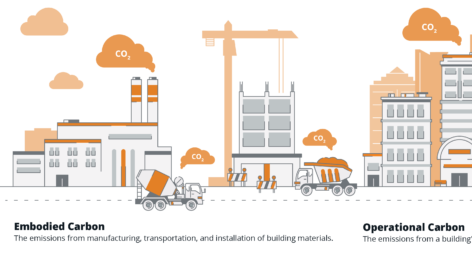There is no one solution to the world’s climate change challenge. Every government, industry, organization, and individual has a role to play. As with any global problem, collaboration is key to solving our climate change challenge.
The Carbon Leadership Forum demonstrated the value of such collaboration with the launch of its Embodied Carbon in Construction Calculator (EC3). Initially conceived by Skanska and developed with C Change Labs, the EC3 tool was jointly seed-funded by Skanska and Microsoft.
The project engaged the collective of the building community. In total, almost 50 industry partners — owners, architects, engineers, contractors, and material suppliers — came together to create a tool that gives builders and designers information about the embodied carbon impact of building materials during the material selection process.
This allows builders and designers to consider the carbon cost alongside the material cost while choosing which products to select. This EC3 process inherently provides an advantage to lower carbon products.
For concrete producers, the development of EC3 is significant as it represents a new way to gain a competitive advantage. Concrete producers that publish product-specific EPDs for low-carbon concrete will appear in searches within the EC3 tool for consideration by specifiers.
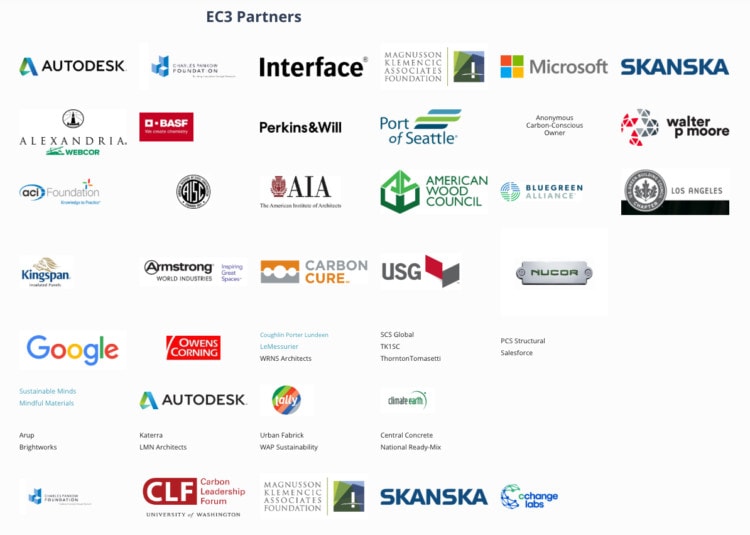
What is Embodied Carbon?
Embodied carbon is the carbon dioxide (CO₂) emissions associated with materials and construction processes throughout the whole lifecycle of a building or infrastructure.
It includes any CO₂ created during the manufacturing of building materials (material extraction, transport to manufacturer, manufacturing), the transport of those materials to the job site, and the construction practices used.
Put simply, embodied carbon is the carbon footprint of a building or infrastructure project before it becomes operational. It also refers to the CO₂ produced maintaining the building and eventually demolishing it, transporting the waste, and recycling it.
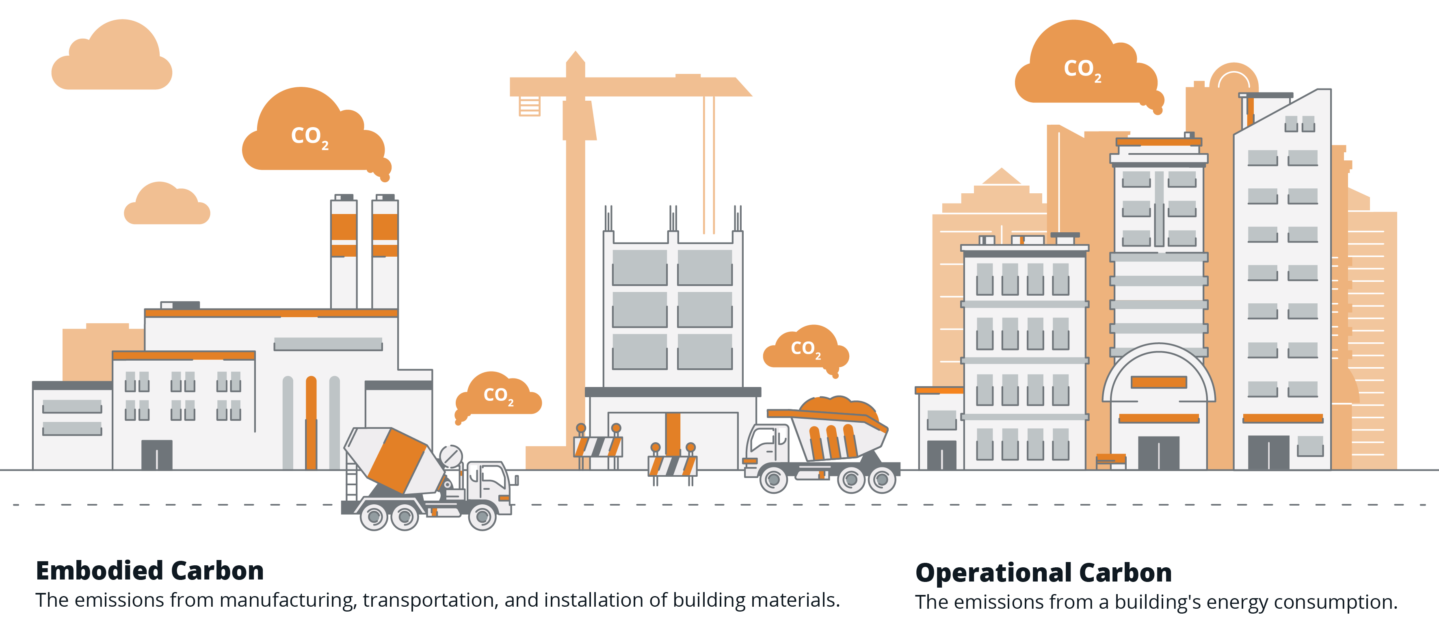
Globally, embodied carbon is responsible for 11% of annual greenhouse gas emissions and 28% of all emissions from the building sector.
Thanks to advances in reducing operational carbon, recent data indicates that embodied carbon is becoming a larger portion of the building's overall carbon footprint. Embodied carbon is expected to account for nearly 50% of the overall carbon footprint of new construction between now and 2050. That’s why EC3 is so important.
EC3’s Purpose
The EC3 tool utilizes building material data from construction estimates and building information modeling (BIM) as well as a robust database of digital, third-party verified Environmental Product Declarations (EPDs).
The EC3 tool uses this data to estimate a construction project’s overall embodied carbon emissions based on the materials selected in both the design and procurement phases. This enables architects, engineers, and contractors to make more informed decisions about low-carbon materials selection.
EC3 also allows owners, green building certification programs, and policymakers to assess supply chain data to create EPD requirements and set embodied carbon limits and reductions at the construction material and project scale.
The tool does not replace the whole building life cycle assessment (WBLCA). Instead, it fills the gap between early design assessments at the systems level using available WBLCA tools and the actual procurement of low-carbon products.
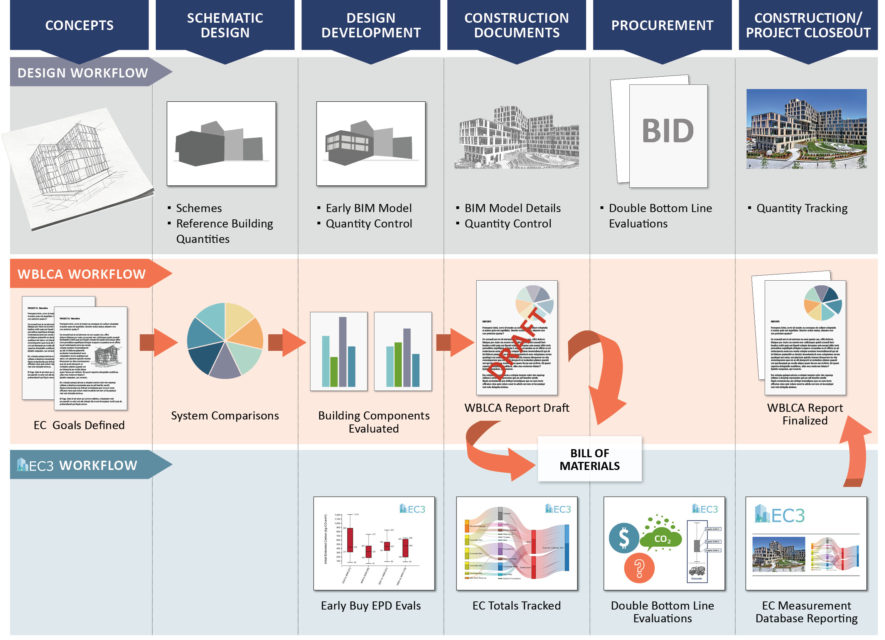
Why Concrete Producers Should Pay Attention to EC3
EC3 is driving demand for low-carbon solutions and incentivizing construction materials manufacturers and suppliers to invest in transparent disclosure and material innovations that reduce the carbon emissions of their products.
As the most prolific human-made material on the planet (and the most carbon-intensive), concrete is a big focus for architecture, engineering, and construction communities—and they’re searching for low-carbon options.
The EC3 already contains 24,000 EPDs for concrete products manufactured in the USA and Canada. The EPDs are searchable and sortable by strength, location, manufacturer, plant, mix ID, and unique properties such as “CO2 Cured” concrete (in which concrete mixes made with CarbonCure’s CO₂ mineralization technology apply).
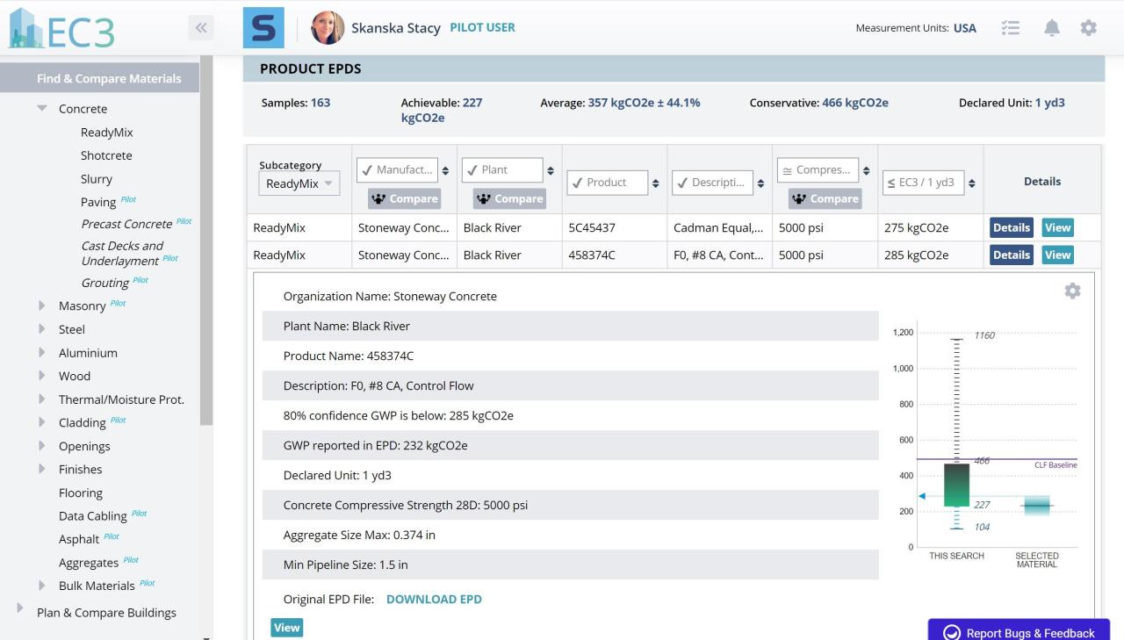
Producers that create low-carbon concrete will have an opportunity to win new business when they publish product-specific EPDs. These EPDs will automatically appear in searches within EC3 for consideration by new and existing clients. Conversely, the EC3 tool will expose higher carbon concrete and create a disadvantage for concrete producers that have yet to adopt low carbon concrete strategies.
To learn more about EPDs, check out The 4 Things You Should Know about Concrete EPDs. For more information on EC3, visit buildingtransparency.org.

Razing a Common Misunderstanding: Early-Age Carbonation vs. Atmospheric Carbonation in Concrete
